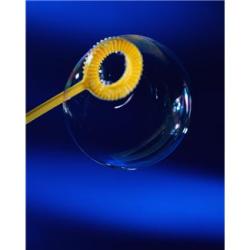Source Institutions
Source Institutions
Add to list Go to activity
Activity link broken? See if it's at the internet archive

In this activity, learners use bubbles to investigate the structure and unique properties of cell membranes. Bubbles serve as macroscopic models that mimic the cells' phospholipid bilayers. Learners also use the bubbles to form prokaryotic cells and eukaryotic cells. This inquiry type lab can be done as a group or cooperative learning experience. Materials listed are designed for a group of 30 learners.
- 45 to 60 minutes
- 45 to 60 minutes
- $5 - $10 per group of students
- Ages 11 - 18
- Activity, Experiment/Lab Activity, Lesson/Lesson Plan, Model
- English
Quick Guide
Materials List (per group of students)
- Overhead projector
- Three dozen all wooden clothespins with round heads
- Thirty pennies
- Ball of cotton string
- 15 pairs of scissors
- Fifteen cafeteria trays
- Thirty straws
- A ten inch piece of aluminum wire
- Pencils
- Old newspapers
- Bubble solution made from 10 parts water mixed with 1 part liquid Joy and about one tablespoon of Karo syrup per gallon of solution
Subjects
-
Life Sciences
-
Cells
- Cell Structure and Function
-
Cells
-
The Nature of Science
-
The Scientific Process
- Conducting Investigations
-
The Scientific Process
Informal Categories
- Toys
Audience
To use this activity, learners need to:
- see
- touch
Learning styles supported:
- Involves hands-on or lab activities
Other
This resource is part of:
Access Rights:
- Free access
By:
- Wardell, Sandra
Rights:
- All rights reserved, Access Excellence @ the National Health Museum, 2009
